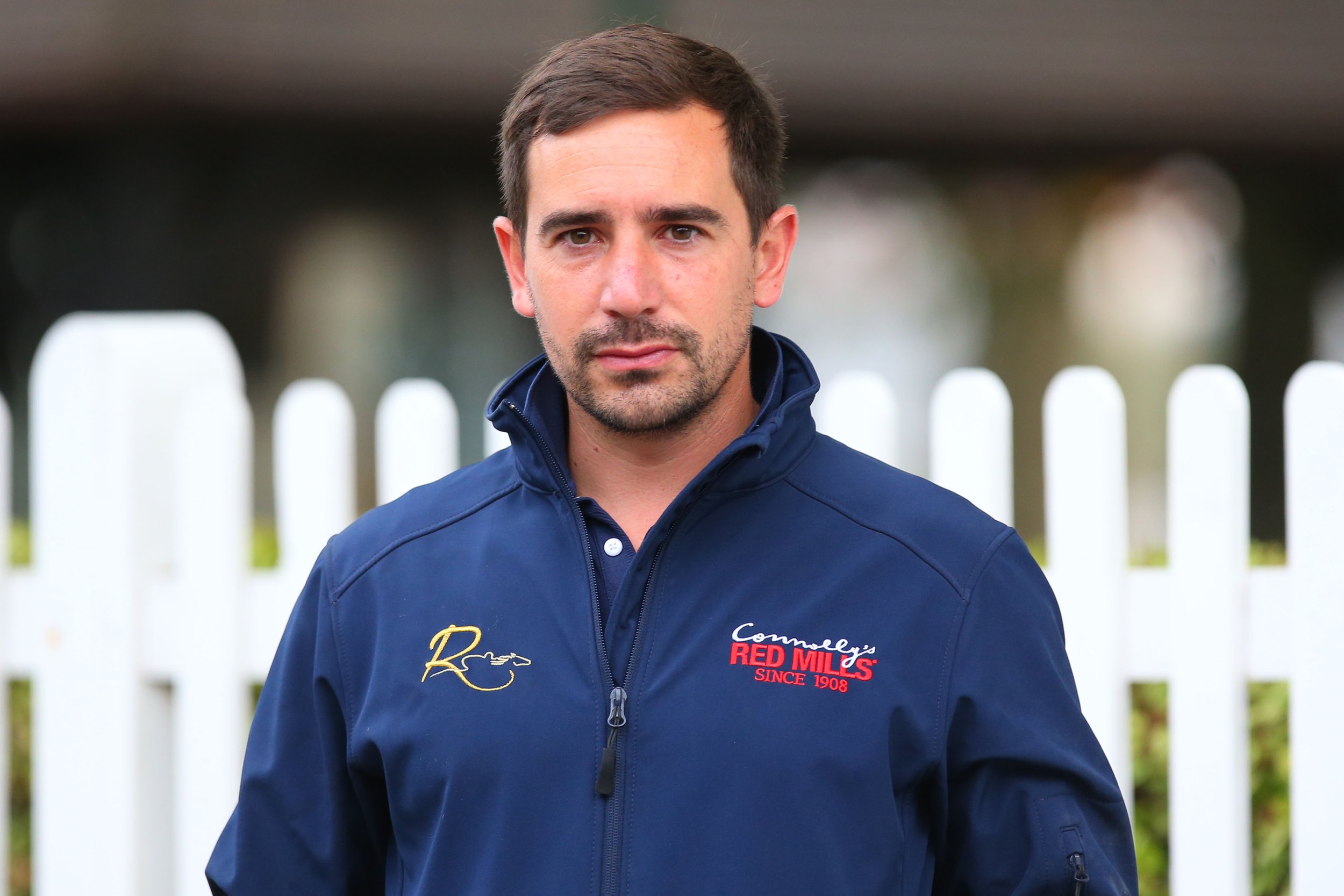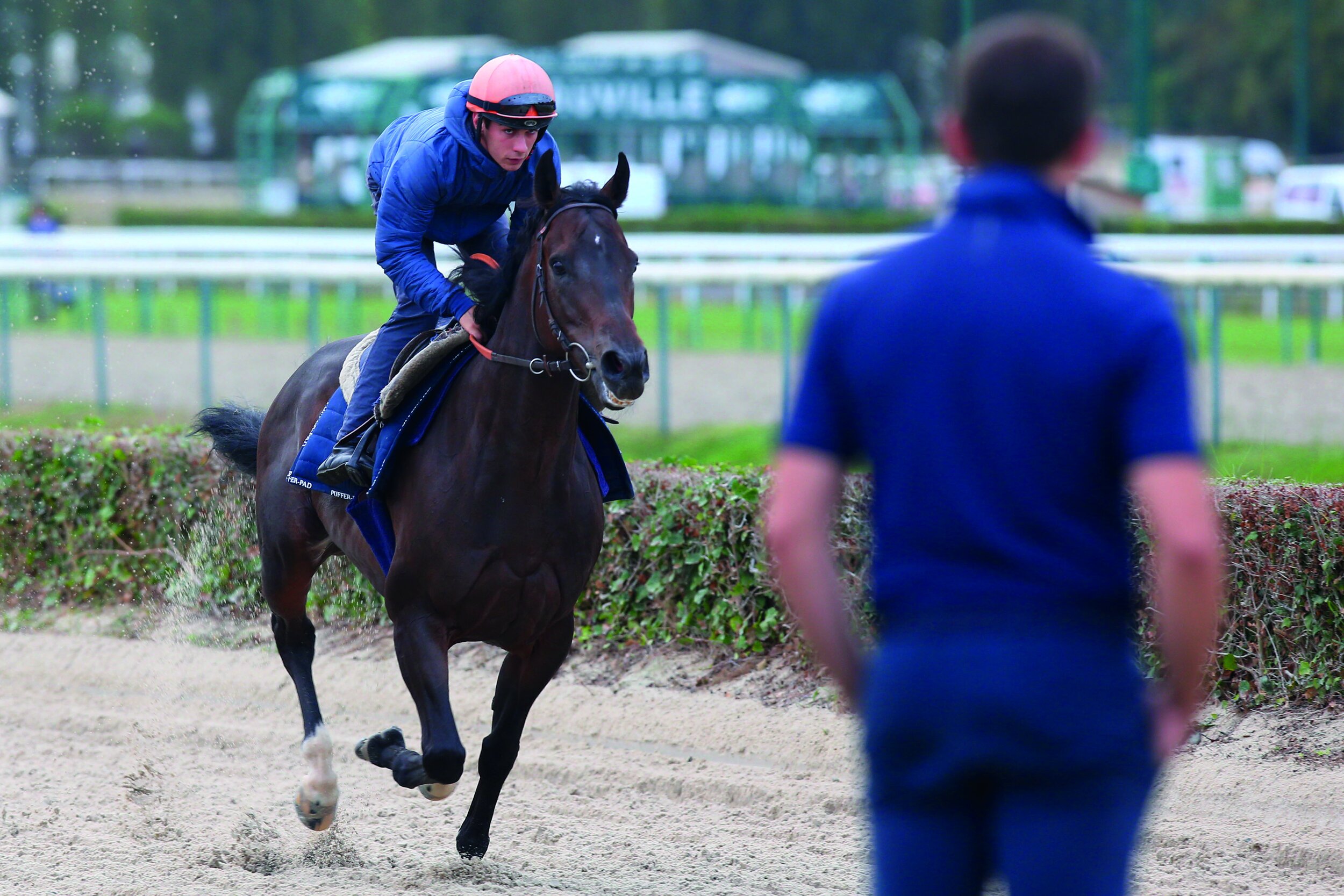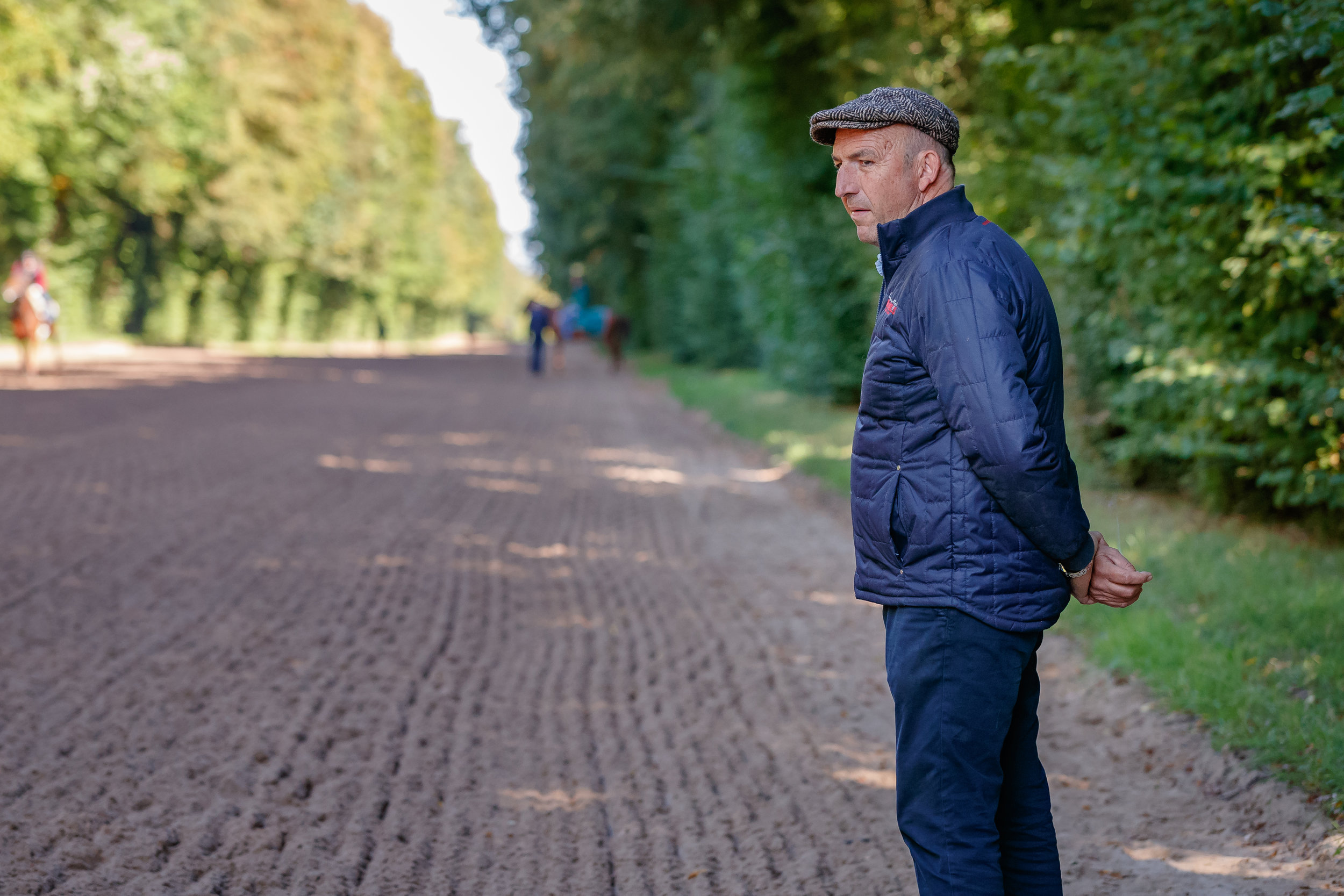The Norwegian Trainer, Silja Støren, with her raft of promising recruits for the season ahead
/Article by Xander Brett
Oslo isn’t the North Pole. Polar bears don’t roam the streets. Reaching the Arctic Circle, indeed, requires a 14-hour drive from the city centre. But snow can coat the Norwegian capital for months at a time. Training horses in this country is no easy accomplishment. That said, it’s a feat achieved by some 37 trainers, 14 of whom call it their profession. Among the full-time contingent, Silja Støren is based at Øvrevoll, Norway’s only racecourse, which sits in the Oslo suburbs. Øvrevoll’s surroundings are home to around 200 of the nation’s 250-odd horses in training. Støren, like each of her Øvrevoll colleagues, enjoys use of the course’s turf and dirt oval. She competes at her home track, and has easy access to a myriad of venues in Sweden and Denmark.
Now in her 30s, Støren has always called Oslo home. Her Norwegian father was a surgeon and her Icelandic mother a nurse. She describes it as a “medical family”, and says there were no horses around while she was growing up. That, perhaps, was wise, given young Silja was allergic to the animals. As her equine enthusiasm developed, Støren’s immune system had to keep pace. “To begin with,” she explains, “I could only spend ten minutes inside a stable. As I got better, that grew to 15 minutes. Before long, I was spending time with horses without the allergy bothering me. It had more or less gone by the time I was ten. That was when I started riding lessons.” Støren’s first ‘pony’, Aberfeldy, was a four-year-old retired racehorse. He arrived when Støren was 12. “My father didn’t know much about horses,” Støren laughs, “so he didn’t know that a 12-year-old girl should probably have a pony, not a thoroughbred. I saw Aberfeldy as a big pony, though. He was the kindest horse ever, and probably kinder than most ponies. Ponies, of course, aren’t always gentle.”
Just three years after Aberfeldy’s arrival, Støren took out an amateur jockey’s licence. She threw herself into the Fegentri amateur riders’ series, and spent two winters working in Spain, at the yards of José Lopera and Guillermo Arizkoretta. Another stint saw her based at the Royal Stables in Bahrain. “I wanted to travel the world and gather experience,” Støren explains, adding that Fegentri adventures took her as far afield as Abu Dhabi and the United States, where she even rode a bunch of winners. “I was 15 when I took out my amateur licence,” she continues. “That’s as young as you’re allowed. Fegentri was a fantastic opportunity to explore the racing lifestyles of other countries. I rode out wherever I was, so I made connections with various trainers and learnt their different ways of working.”
Back home, Støren picked up Norway’s Champion Amateur title in 2014 and 2015. She’s adamant, however, that a professional riding career wasn’t for her. “In Norway,” Støren explains, “female apprentices are usually light. That means they get most of their rides from male jockeys who can’t make that weight. I didn’t really have that advantage, though I could make 56 kilos on a good day.” Støren served her apprenticeship under Oslo-based Isidro Vergara. By 2020, she had hung up her boots and joined him in the training ranks. “I always wanted to train,” Støren makes clear. “I just needed to arrive at a point where I thought I could bring in the owners. I was told early on that training horses is easy; it’s finding owners that’s difficult.”
Støren says years of riding experience has provided valuable lessons for her training career. It helps, too, that she can count on advice from her partner, Manuel Martinez, who is currently serving as Norway’s Champion Jockey. “Having Manuel has been so helpful,” Støren muses. “He knows the horses so well. He has played a big part in building up the success of the stable. I don’t think I could’ve done it without him.” Martinez has racked up over 3,000 victories around the world. He was Støren’s ready-made retainer and only form of assistance when she took out a trainer’s licence. Four years on, the yard’s ranks have swelled. The couple are now joined by a steady stream of work riders each morning. “I’m always trying to bring new people into the sport,” Støren states, saying she even welcomes prospective employees whose first equine experience is getting the leg-up on a racehorse.
“My main focus,” Støren explains, “is to keep the horses happy and sound. I try to train and feed them individually. The aim is to keep them fit, but not so as they get injured or lose interest. If a horse isn’t moving like it should, or if I want to change equipment, I’ve an advantage in that I can get on and see how it feels for myself. If I’m in doubt, I can put Manuel onboard. Together, we usually figure it out.” Støren says she knows each of her horses well, and she’d like to think she can spot if one isn’t themselves. She says her stable is assisted by a good team of farriers and vets, and she ensures the horses spend time in the paddocks. “We like to bring our horses to the forest in winter,” Støren adds. “They canter uphill in the snow, building a strong ground condition for the season.”
Norway has exported William Buick and French-based jockey Frida Valle Skar. Martinez and Støren’s former boss, Isidro Vergara, meanwhile, are among many South Americans propping up the Scandinavian racing world. Elione Chaves, Annike Bye Hansen’s newly signed first jockey, hails from Brazil. Chaves flew the Norwegian flag at Royal Ascot last year. He was aboard the Cathrine Erichsen-trained Duca Di Como when the now nine-year-old recorded a disappointing second-last in the Wokingham. Duca Di Como did, however, take a fifth success in Sweden’s Listed Nickes Minneslöpning later in the year.
Carlos Lopez, who acts as stable jockey for Niels Petersen – Norway’s Champion Trainer – is a Chilean arrival. “There are lots of South Americans,” Støren confirms, despite the paperwork required for arrivals outside the European Union or European Economic Area. “They have to apply to work here,” says Støren, “then wait two or three months for a response.” Støren is on a drive to recruit more native-born Norwegians. “The problem is,” she admits, “compared to other work in Norway, this isn’t lucrative. We work long hours, and it doesn’t pay well. The South Americans, however, are earning more than they would back home. They can send money to their families, even if Norway’s living costs are high.”
With new horses filling empty boxes, Støren needs the staff. She is, though, covered for the season, with enough employees to look after her operation. Last year, Støren had a battalion of just over 20 horses. A marked increase, certainly, from the 12 or so she looked after during her first few years with a licence.
The current line-up is headlined by five-year-old Hotline Bling. The son of Cotai Glory ended last season behind Kevin Ryan’s Washington Heights in the Listed Bro Park Sprint Championship. That came three months after he stormed clear to land Bro Park’s Listed Challenge Stakes, delivering Støren her first Black-Type success.
Now the property of Valstad Stable, Hotline Bling transferred from Amo Racing ownership, and the yard of Richard Hannon, midway through his two-year-old campaign. Running three times in Dubai at the start of 2022, he took the Norwegian 2,000 Guineas later that year. A trip to Glorious Goodwood followed, where he came home fifth of seven in the Group 3 Thoroughbred Stakes.
Støren says she’s delighted to have a horse who can compete with foreign raiders. “Hotline Bling particularly loves Bro Park,” she continues. “He raced twice in Norway last year, but the course didn’t suit him. When he gets to a flat track like Bro Park, he’s super good. It has been great to show people that we can train a horse like him.”
Støren says she gets on well with her owners, and they feel they can ring her anytime. “They all support us,” she explains, “and we spend time with them outside work.” Hans Christian Axel Melbye and Miriam Top are among her newest patrons. Together, the couple form Bling Enterprise, an operation that keeps a sizable string at Støren’s yard.
This includes All Star Bling, a €120,000 purchase at last year’s Tattersalls Ireland Goresbridge Breeze-Up Sale. “Bling Enterprise have been a super addition to our team,” Støren explains. “They have invested in us, and they have trusted us with so many nicely bred horses.” Støren says it all started when Hans Christian Valstad (of Valstad Stable, who own Hotline Bling) came to install an alarm at Melbye’s house. “He mentioned he had a racehorse,” Støren explains. Melbye then came to her open day. “I told him we had a 50 per cent share in a Norwegian-bred horse,” she continues. “He bought the share. Later, he wanted something for himself, so he secured two horses at the Tattersalls Craven Breeze-Up Sale. He bought a couple more last summer.”
Støren says she likes to support Norwegian-breds, but she’s equally excited to see how British and Irish imports get on in Scandinavia. Breeders of Norwegian horses receive 20 per cent of what the horse earns, and there are races dedicated to Norwegian or Scandinavian-breds. Owners can also receive a bonus for taking on imported runners, with 30,000 NOK (c. £2,240) available to cover import costs.
Alongside Hotline Bling, Sid Game was among a handful of Støren stable stars last year. The now four-year-old won six of his seven starts in 2023, signing off the season with victory in Øvrevoll’s Breeders Prize Sprint. Thanks to generous prize money in races for Norwegian and Scandinavian-breds, Sid Game was second only to Wido Neuroth’s Norwegian Derby-winning Ami De Vega as the track’s highest earning three-year-old. “He went out and did exactly what he was supposed to do,” says Støren. “I also had Buckyboss. He had two wins and was second to Sid Game in the Breeders Prize Sprint. Those horses have been great advertisements. But helping any horse achieve its best is what I enjoy most about this job.”
Eleven Støren charges won at least once last year, and the trainer says she hopes to run more horses outside Scandinavia shortly. She and Martinez had planned to send a batch of runners to Dubai this winter, but decided to hold off until next year. A return to Goodwood, she says, was also on the cards in 2023. This, however, was skirted to avoid missing key contests at home.
Annike Bye Hansen-trained Hard One To Please represented Norwegian interests at the Sussex track instead. Jim Crowley guided the son of Fast Company to a Group 3 sixth on Glorious Goodwood Friday.
Støren has made six entries for the 2024 Norwegian Derby, and the Bling Enterprise arrivals help form a raft of promising recruits for the season ahead. “I know it’s a big thing for a new trainer to dream about winning a Derby,” she admits, “but you can always try. We’ve had some nice recruits coming in, and that has been a great help. It shows that I can improve and maintain the horses in my care.”
When asked if she can switch off from training, Støren is swift in response. “No,” she laughs. “I don’t stop working.” Støren admits spending every minute with her partner can be challenging, given they not only work in the same industry but in the same yard. “It’s part of being a trainer,” she clarifies. “Even when you try to think about something else, in the back of your mind you’re always planning the next race. Owners call, or you spend time looking at horses for sale. I love horses, so I like life that way. We have good owners, and the future looks bright. There are many young horses who haven’t been out yet. I hope we can accomplish great things with them later this year.”


























